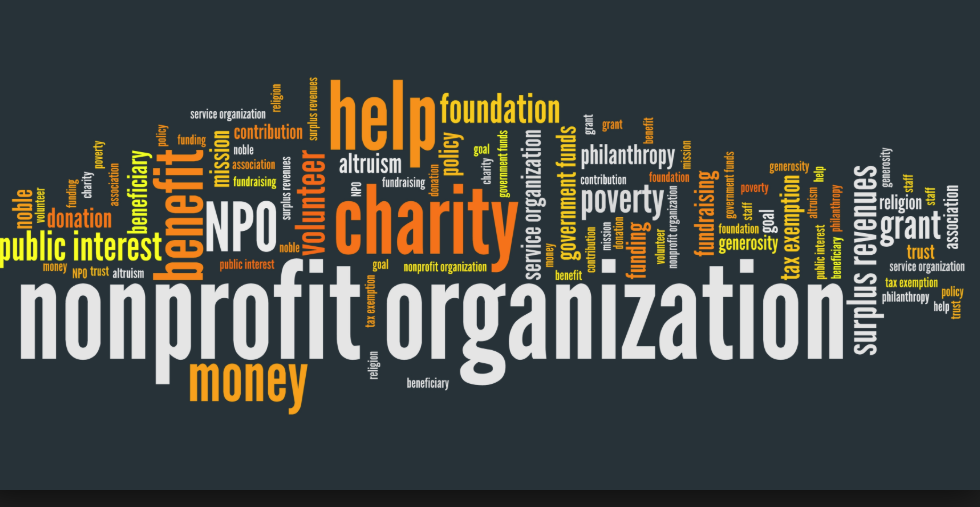Understanding the Crucial Function and Influence of a Nonprofit Company in Area Growth and Support Solutions
Not-for-profit companies work as crucial stimulants for area growth and assistance solutions, addressing the diverse demands of marginalized populaces. By setting in motion resources and fostering collaborations with city governments, they not just advocate for fair accessibility to crucial services however also recognize important gaps in assistance. nonprofit agency. Their efforts, ranging from food help to real estate assistance, highlight their commitment to social equity. Nevertheless, the landscape of not-for-profit job is fraught with challenges and chances that can dramatically affect their effectiveness. Comprehending these dynamics is critical to valuing their full effect on community resilience and sustainability.
Definition of Nonprofit Agencies
Nonprofit agencies are often defined as companies that operate primarily for objectives aside from generating profit for investors or owners. These entities concentrate on dealing with social, social, ecological, or neighborhood requirements, and they reinvest any excess incomes back right into their mission-driven activities. Nonprofits might take various types, consisting of charitable companies, structures, campaigning for teams, and social ventures, each with functional structures and unique frameworks.
The leading principle of a nonprofit firm is its dedication to serving the general public interest. This devotion often shows up in a broad series of solutions, from education and healthcare to housing and ecological preservation. Nonprofits usually rely upon varied financing resources, consisting of donations, gives, and subscription costs, to support their efforts.
In order to maintain openness and accountability, nonprofit firms are called for to stick to certain laws and reporting standards. This oversight is vital for constructing count on with stakeholders, including benefactors, volunteers, and the neighborhoods they serve. By focusing on social effect over monetary gain, nonprofit companies play a crucial role in fostering neighborhood growth and addressing pushing social obstacles, therefore adding considerably to the overall well-being of society.
Secret Functions in Community Growth
Community development thrives on the energetic interaction of different organizations, with nonprofit agencies playing a crucial function in fostering sustainable development and renovation. These companies serve as important facilitators, bridging voids between area demands and offered sources. One of their essential functions is to recognize and evaluate local demands through neighborhood interaction, guaranteeing that growth initiatives are pertinent and tailored to the certain context.

Advocacy is another essential function of nonprofits, as they represent the interests of the neighborhood in plan discussions, pressing for equitable accessibility to services and sources. By raising recognition on crucial concerns, they add to informed decision-making at numerous degrees. Eventually, the diverse functions of nonprofit agencies in neighborhood development not only promote immediate improvements however also prepared for long-lasting sustainability and strength within communities.

Influence On At Risk Populaces
Exactly how do nonprofit agencies specifically address the needs of vulnerable populations within community development efforts? Nonprofit firms play a vital function in recognizing and dealing with the one-of-a-kind obstacles faced by marginalized teams, consisting of low-income families, the senior, and people with handicaps. By customizing their programs and services, these companies can give essential support that promotes resilience and self-sufficiency.
For example, many nonprofits offer accessibility to food help programs, housing support, and healthcare solutions that directly alleviate the worries faced by susceptible populaces. In addition, they typically work as supporters, magnifying the voices of those who might otherwise go unheard in plan discussions. Through area outreach and education and learning, nonprofits encourage people with the understanding and resources essential to browse intricate systems and protect their civil liberties.
Furthermore, nonprofits participate in capacity-building initiatives that improve the abilities and opportunities of prone people, thus promoting social equity. Their dedication to inclusivity guarantees that neighborhood advancement initiatives are extensive and responsive to the varied needs of all citizens. In recap, not-for-profit agencies are crucial in alleviating the obstacles faced by susceptible populations, promoting area communication, and driving lasting development.

Cooperation With City Government
While many difficulties in community advancement call for collective initiatives, collaboration between not-for-profit companies and city governments is necessary for developing efficient services. This collaboration enables the pooling of resources, know-how, and networks, which can considerably enhance solution shipment and neighborhood interaction. Nonprofit agencies often have firsthand knowledge of the requirements and ambitions of regional populaces, enabling them to inform federal government plans and programs successfully.
Moreover, city governments can supply vital assistance in regards to financing, infrastructure, and governing frameworks that help with the job of nonprofits. This harmony not only promotes a much more extensive method to dealing with community issues yet also guarantees that initiatives are based in the realities of the populaces they aim to serve.
Joint initiatives, such as community health and wellness programs, educational workshops, and housing jobs, highlight the substantial benefits of this collaboration. By aligning their approaches and goals, local federal governments and not-for-profit agencies can develop lasting effects that enhance the lifestyle for residents.
Challenges and Opportunities Ahead
The partnership between regional federal governments and not-for-profit agencies, though useful, is not without its challenges. One significant hurdle is the typically limited funding available for nonprofit companies, which can prevent their capacity to implement thorough neighborhood programs. This economic constraint can cause competition for sources, developing stress amongst numerous agencies making every effort to achieve similar objectives. Furthermore, differing concerns between nonprofits and federal government entities can cause misaligned objectives, complicating collaborative efforts.
However, these difficulties additionally present distinct chances. Nonprofits can take advantage of their grassroots links to he has a good point recognize community requirements that may be overlooked by federal government agencies, guaranteeing that solutions are customized to the neighborhood people. By promoting ingenious partnerships and checking out different financing sources, such as social business or grant chances, nonprofits can improve their sustainability and influence.
Additionally, the expanding recognition of the value of collective influence encourages a much more incorporated approach to neighborhood development. This develops a fertile ground for nonprofits to advocate official website for policy modifications that deal with systemic problems. By embracing both chances and difficulties, not-for-profit firms can continue to play an essential role ahead of time community development and support services, eventually benefiting the communities they offer.
Final Thought
In recap, not-for-profit companies serve as essential catalysts for neighborhood growth and support solutions, efficiently dealing with the needs of susceptible populaces. In spite of facing challenges, the potential for development and development within the nonprofit market stays substantial.
Not-for-profit firms serve as essential stimulants for area growth and assistance solutions, dealing with the diverse requirements of marginalized populaces. Eventually, the complex roles of nonprofit companies in area development not just advertise immediate enhancements yet likewise lay the foundation for lasting sustainability and strength within areas.
While many difficulties in neighborhood development need concerted initiatives, Read More Here partnership in between neighborhood governments and not-for-profit agencies is important for developing efficient solutions. By accepting both opportunities and obstacles, nonprofit firms can continue to play an essential function in progressing neighborhood development and assistance services, inevitably benefiting the communities they offer.
In summary, not-for-profit agencies serve as essential catalysts for neighborhood advancement and support solutions, effectively dealing with the requirements of at risk populations. - nonprofit agency